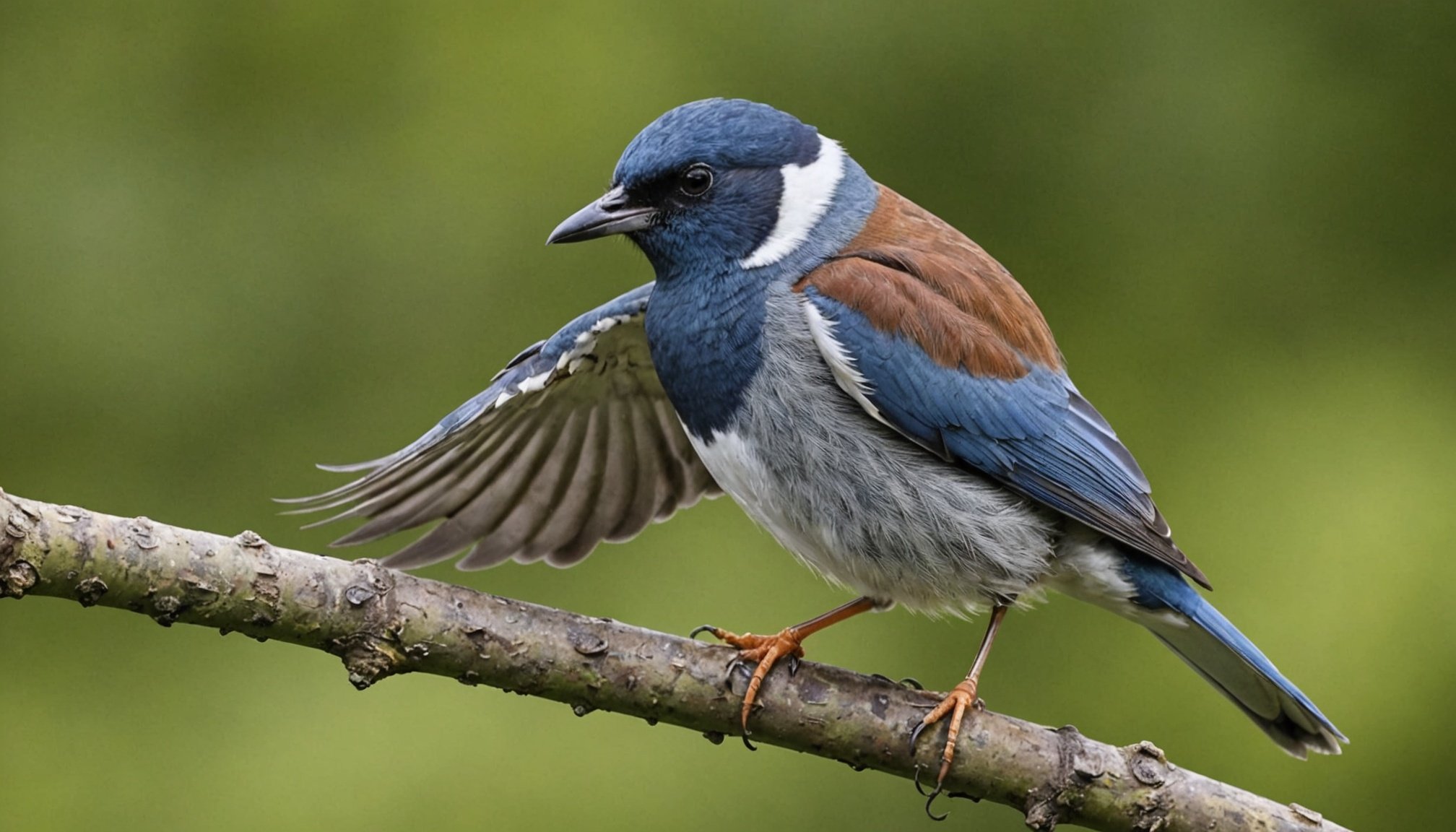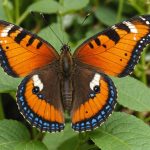Understanding Rare Birds in the UK
The diversity of bird species in the UK offers a remarkable opportunity for observing rare birds. With over 600 known bird species, the emphasis on understanding these rare avian species is crucial for conservation and ecological studies. Rare birds in the UK, such as the Wryneck or Red-backed Shrike, benefit from this attention as enthusiasts and researchers strive to preserve their habitats and promote biodiversity.
Recognising the habitats and behaviours of rare birds illuminates why certain species are scarce. Habitats—ranging from woodland and heath to coastal marshes—are pivotal for the sustenance of UK avian diversity. Environmental changes, both natural and anthropogenic, can influence their availability and behavior, making these discoveries essential for protecting these unique avian communities.
Also to read : Exploring the effects of climate change on coastal bird populations in the uk: a deep dive into the consequences
Conservation efforts are critically focused on preventing further decline. Initiatives by organisations and local communities aim to safeguard habitats, create awareness, and implement legislative protections. Actions like habitat restoration, predator control, and research funding ensure that rare birds continue to thrive. Understanding the current conservation status of these birds aids in prioritising efforts and resources for maintaining their populations. Through effective conservation strategies, we ensure that these extraordinary bird species play an ongoing role in the UK’s rich natural tapestry.
Optimal Locations for Spotting Rare Birds
Birdwatchers in the UK are spoilt for choice when it comes to birdwatching hotspots. Top UK birding locations offer a plethora of opportunities for spotting rare bird habitats. Among these, the Norfolk Coast, the Scottish Highlands, and the Brecon Beacons stand out for their rare avian treasures.
In the same genre : Discovering the integration of wildlife conservation in educational programs at uk universities and schools
In Norfolk, the Snettisham RSPB Reserve is renowned for its wintering waders and geese, providing a spectacular scene of UK avian diversity. The Scottish Highlands, known for elusive species like the Capercaillie and Scottish Crossbill, present vast landscapes that are best explored in dedicated parks and reserves. Meanwhile, the Brecon Beacons charm birdwatchers with sightings of the red kite, especially in areas like the Llandeilo area.
Seasonal variations add excitement to birdwatching. Spring and autumn migrations transform these landscapes into busy passages. In spring, migratory patterns reveal lush sites with an influx of species returning to their breeding grounds. Conversely, autumn sees these birds heading to warmer climates, enriching the experience for enthusiasts.
With such diverse regions and birding locations, enthusiasts have unparalleled opportunities for witnessing distinctive avian behaviors and documenting sightings. Embracing these regions not only enriches one’s birdwatching encounters but significantly contributes to appreciating and conserving these endearing creatures.
Best Times for Birdwatching
Understanding birdwatching seasons is pivotal for an enriching experience. Grasping migratory patterns helps birdwatchers identify the optimal periods to witness diverse avian activity. In the UK, the arrival of spring heralds abundant opportunities as bird species return to their breeding sites. This period is often bustling with the activity of warblers and cuckoos, making it a prime time for enthusiasts.
Conversely, autumn sees many birds preparing for migration to warmer regions, offering a distinct birdwatching charm. Mornings and late afternoons are generally the optimal birding times for activity, as birds are most visible, engaging in feeding and social interactions. Pairing this knowledge of daily rhythms with the seasonality of migrations ensures rewarding birdwatching sessions.
Weather conditions, meanwhile, significantly enhance or hinder bird visibility. Overcast yet bright skies tend to be ideal, providing good lighting without causing silhouettes, while windy days might drive birds to shelter and reduce sightings. Therefore, planning birdwatching ventures with attention to these factors maximizes the potential for spotting rare birds and understanding their movements. Equipped with this knowledge, bird enthusiasts can time their adventures to align with peak bird presence, ensuring memorable encounters with the UK’s rich avian diversity.
Essential Equipment for Birdwatching
Engaging in birdwatching requires the right birdwatching gear to enhance the overall experience. The first priority for any birdwatcher should be selecting reliable optics. Binoculars with a wide field of view and 8x to 10x magnification are ideal for observing bird species from a distance. Spotting scopes serve as an excellent supplement for detailed views, especially for distant rare birds observed in UK birding locations.
Photography enthusiasts treasure capturing fleeting moments, which necessitates investing in suitable camera gear. A digital SLR with a telephoto lens is recommended for distant bird photography, while mirrorless cameras offer a lightweight alternative without compromising image quality. Carrying extra batteries and storage cards ensure no moment is missed.
Beyond optics and cameras, other accessories play supportive roles. A notebook or digital app helps keep meticulous documentation of sightings and behavioral observations. Field guides, both print and app-based, provide immediate access to identification tips and habitat information. Birdwatchers might also consider GPS devices to track location data of rare bird habitats, contributing valuable data to conservation efforts. By equipping themselves with these essentials, enthusiasts can maximise their encounters and contribute meaningfully to avian studies.
Techniques for Effective Spotting and Documentation
Enhancing your birdwatching experience involves mastering specific birdwatching techniques. Firstly, cultivating patience is crucial; many rare birds are elusive. Spend time silently observing, allowing the natural environment to reveal its avian secrets. Stealthy movements and staying attuned to avian sounds are vital in spotting these creatures.
Effective documentation methods can elevate your encounters into meaningful data. Keeping detailed field notes is essential. Describe not just the bird’s appearance but its behaviour and habitat, as these details enrich personal records and contribute to broader conservation efforts. Carry a notebook or use a digital application to ensure easy access and organization of your observations.
Photography and video play supportive roles in these efforts. Capturing moments through images or videos aids in confirming identifications and provides a visual record. It also adds a layer to your documentation, particularly useful for sharing findings or participating in birdwatching forums.
Embracing these spotting techniques and documentation methods enhances both personal birdwatching fulfilment and contributes to the ongoing understanding of UK avian diversity. Engaging with these practices cultivates both skills and knowledge, creating rewarding birdwatching excursions.
Checklists for Rare Bird Sightings
Utilising birding checklists enhances birdwatching efficiency by ensuring structured and focused outings. For enthusiasts seeking rare bird species, creating personalised checklists is invaluable. Tailor these to specific birdwatching locations and bird species, especially when planning trips to renowned UK destinations such as the Norfolk Coast or Scottish Highlands. Start by listing target species, considering seasonal variations which influence bird presence.
Many resources provide pre-made checklists, aiding in identifying and tracking rare birds. Websites and birdwatching apps often feature comprehensive lists and guides, tailored to prominent birdwatching regions. Apps like BirdTrack and eBird not only offer checklists but support real-time reporting, enhancing both personal records and contributions to larger conservation datasets.
Technology plays a pivotal role in checklist management. Within apps, digital checklists enable birdwatchers to instantly log sightings, access bird information, and map bird habitats. Whether using paper or digital formats, these observation tools are indispensable for organised and rewarding excursions. As birdwatchers fine-tune their routines with the aid of these guides, they can embrace rewarding experiences, cementing their role in appreciating and conserving the UK’s avian diversity.
Personal Anecdotes and Expert Insights
Listening to personal stories and acquiring insights from experts in ornithology enriches any birdwatching journey. Birdwatching experiences from seasoned enthusiasts reveal various insights into spotting the most elusive species. For instance, an early morning venture in the Scottish Highlands might yield sights of the majestic Capercaillie, aided by patient exploration and an understanding of its unique habitat preferences.
Expert interviews often reveal techniques that enhance one’s understanding of avian behavior. Ornithologists recommend focusing on both sight and sound—listening for specific calls can often lead to rare bird sightings, providing an immersive birdwatching experience.
Notable encounters with rare birds, such as observing a Wryneck during its brief migration stop, highlight the unpredictability and excitement of birdwatching. These experiences underscore the importance of being present in the right habitat at the right time.
Through these anecdotes, birdwatchers can gain both practical tips and deeper appreciation for the diversity within the UK’s avian community. The shared narratives and professional advice enable enthusiasts to refine their skills, leading to more fulfilling and successful birdwatching adventures. Engaging with such stories connects individuals to broader conservation themes, inspiring renewed dedication to protecting these rare species.
Conservation and Ethical Birdwatching
Engaging in birdwatching requires an understanding of both bird conservation and ethical approaches. This ensures that enthusiasts not only enjoy their hobby but also contribute positively to the welfare of bird species.
Ethical birdwatching practices are essential for minimizing human impact on wildlife. Among these practices, maintaining a respectful distance from rare birds and avoiding habitat disturbance are paramount. This ensures that birds aren’t stressed or driven away from their natural environments. Additionally, birdwatchers should refrain from using playback calls excessively, as these can disrupt natural behaviors and breeding routines.
Conservation efforts play a crucial role in preserving UK avian diversity. Birdwatchers can make a significant impact by participating in and supporting such initiatives. This could involve contributing to monitoring projects, engaging in habitat restoration activities, or volunteering in conservation organizations focused on bird species protection.
Being aware of local and national conservation laws helps enthusiasts understand their responsibilities and align their activities with the broader goals of preserving wildlife. Embracing ethical birdwatching and contributing to conservation projects enriches the birdwatching experience and helps secure a sustainable future for these magnificent creatures.
Resources for Further Learning
For those keen on expanding their birdwatching knowledge, an array of birdwatching resources and educational tools are readily available. These cater to enthusiasts of all levels and objectives. Books such as “The Collins Bird Guide” offer in-depth insights into bird species identification and behaviour. Complementary online resources, including The British Trust for Ornithology, provide detailed research reports pertinent to rare UK bird species.
Birdwatching clubs across the UK, like the RSPB’s local groups, provide ample opportunities for enthusiasts to engage with fellow birders. Joining such communities not only fosters connections but also provides a collaborative platform for sharing sightings and experiences. Moreover, being part of a community enhances access to group birdwatching trips, often led by seasoned birdwatchers, which help hone spotting skills.
For more hands-on learning, workshops and courses offer practical guidance and are invaluable for skill enhancement. Institutes like the Field Studies Council conduct courses focusing on various birdwatching aspects, from bird identification to understanding UK avian diversity. Engaging with these resources offers birdwatchers enriching experiences, deepening their appreciation and understanding of the fascinating world of birdwatching.









